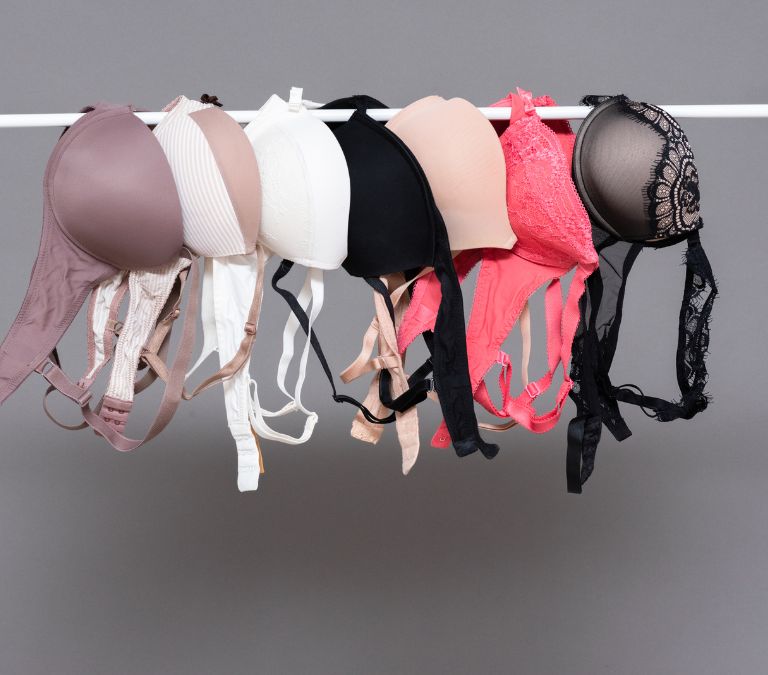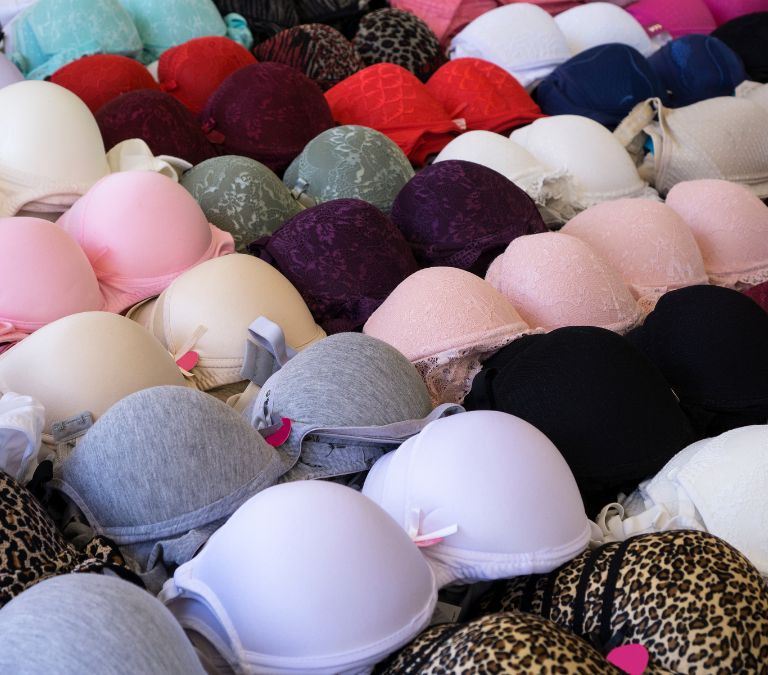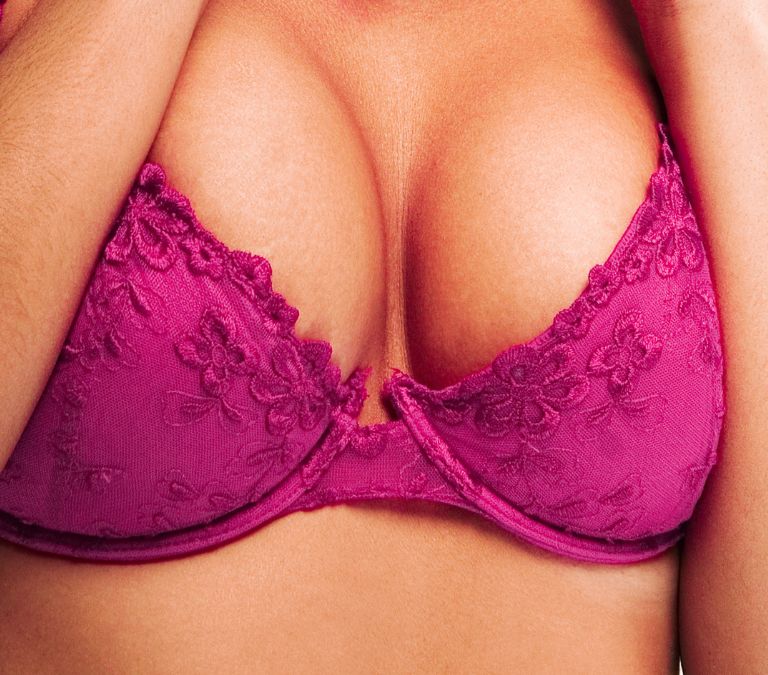Your breasts will begin to change in size and shape during perimenopause – the years leading up to the cessation of menstruation. Additionally, you may notice that they are tender and achy at random periods. They could also be a little lumpier than they were before.
You’ll need to know what’s natural, what isn’t, and what can be done to help. This information gives you the confidence to ease through menopause and beyond.
Although many women notice an increase in breast size as they age, scientists believe there are no conclusive answers to why it happens.
Your breast size can be affected by various interrelated factors, such as changes in hormone levels, a propensity to gain weight all over the body, and water retention.
The breast tissue changes in texture and composition when estrogen levels decline after menopause. It results in the sagging and loss of flexibility of glandular tissue, but it does not necessarily increase in size.
The breasts can be affected in two ways by menopause and the perimenopausal stage.
-
Breast enlargement and reshaping
As you approach menopause, your estrogen levels begin to decline rapidly. The glandular tissue in your breasts decreases as your milk supply ends. Sagging can occur due to the loss of density and increase in fat content. If your breasts aren’t as full as they used to be, or if their size changes, these are all possibilities.
One in five women will see an increase in the size of their boobs as they get older, and many of these women will expand their boobs by two sizes or more.
Your hormones are once again accountable for this physical transformation. Breasts go through a process known as ‘involution’ when milk glands shut down, and this tissue is replaced by fat when estrogen levels drop.
Fat cells build up throughout your body, even in your breasts, when you gain weight. Because of a decrease in estrogen, many women gain weight all over.
In addition to the breasts’ changing size and form due to gravity’s pull and tissue’s loss of elasticity, there are other aspects to consider. In addition to this, there’s the monthly hormonal upheaval that causes them to swell up.
It’s no wonder that by the time you reach menopause, your breasts no longer feel like your own.
What you should do
- Keep an eye on your weight.
When it comes to perimenopause and menopause, it’s usual for women to gain a few pounds.
Please don’t try to lose weight quickly if you’ve realized that your breasts aren’t the only swollen thing; this will cause your mammary glands to droop by removing fat too soon.
One or two pounds of weight reduction every week is more manageable and healthier for your health in the long run than rapid, abrupt loss.
Causes of Breast Enlargement
A variety of factors can cause breast swelling. The causes might range from minor to major.
- Breast ducts and milk glands might grow larger due to hormonal shifts and other changes in your body. As a side effect, increased breast swelling may be caused by water retention.
- Breast cancer symptoms can also cause swelling of the breasts. Breast cancer comes in many forms. Your breasts may enlarge due to clogged lymph vessels caused by inflammatory breast cancer.
- Your breast tissue may seem pitted, similar to an orange peel. Lumps that feel hard and throb in your breasts may indicate the presence of a tumor.
- Breast swelling can be caused by various other factors, such as meals and beverages containing high caffeine or salt.
-
Sagging and Shrinkage of the Breasts
A woman’s breast size and form are subject to change – a truth that no woman wants to deal with. Sometimes, the breasts begin to droop. They lose their slenderness and may even decrease in size due to this condition. As a result, many women experience a reduction in breast size as they enter menopause.
Especially for women with smaller breasts, this can significantly impact their self-esteem and femininity; for many of us, our breasts define who we are as women. Our self-worth, how sexy we think we are, and our relationships with our partners may affect how we feel about our bodies as they change.
It’s all about low estrogen in this case. It can impair the cell’s connective tissue and ability to maintain its structural integrity.
Causes of Breasts Reduction
- Aging
Breast tissue loses elasticity as a woman ages, and the ligaments that hold it together become more stretched and less elastic. Consequently, breast fullness is reduced because the underlying tissue and fat support system are diminished. Menopause is a time when these shifts might be most noticeable.
Newtonian gravitational force. Women with bigger breasts are particularly vulnerable to the effects of gravity’s gravitational pull over time.
- Wrong bra use
It is critical to use a supportive bra to keep your breasts looking full and lifted. The lack of sufficient assistance will take its toll for 30 to 40 years.
- Smoking
Elastin breaks down in the body when exposed to carcinogens in cigarette smoke. These elastin fibers provide elasticity.
- Sunburn
Damage to the skin is caused by ultraviolet radiation, which also reduces the skin’s suppleness.
- Weight gain
Breast enlargement might unnecessarily occur if a person’s weight fluctuates a lot. A healthy weight can prevent unnecessary stretching in women if they maintain a healthy weight.
The breasts go through a lot of changes as we get older. Pregnancy, childbirth, and menopause all affect their appearance. We must look deeper when finding the greatest bra models for menopause and beyond.
Bra Requirements and Types You Should Consider after Menopause

The fashion industry often seems to overlook the needs of older women. Because you’re getting older, it’s not a good idea to stop wearing a bra. It’s only a matter of finding one that’s the right size and style for your body type.
It may be time to change if you’ve always purchased a back-closing bra. Here are the types of bras you should consider.
- Elastic, molded, and unpadded
Choose a bra with a stretchy, molded, and unpadded cup if you are experiencing menopause-related breast growth.
- Front closures
Front clasps are the majority’s favorite but produce zippered or hook-and-eye clasps. They are a great option if you have limited movement in your arms or shoulders. With a front-closing bra, you don’t have to be a gymnast to get in and out of a bra.
- Pullover design
In most compression bras, there is no closure, so you must pull the bra over your head to put it on. Full-chested ladies aren’t the best options, especially if comfort is a priority.
Getting it off is also quite a workout.
- Fast-end closures
Make sure you select a bra that can easily fasten on the loosest closure setting to get more wear as the elastic expands over time.
This style of closure was the norm for a long time, whether you fastened yours in the front and spun it around or hooked it behind your back.
Check to see how many hooks and eyes are on the item. It’s okay to have two, but having three is ideal, especially if you’re larger built.
Keep an additional piece of cloth between the metal hooks, eyes, and your skin if you suffer from a nickel allergy. It is a typical feature in most high-quality products.
- Full-coverage
There are always new trends in every field. The bra business is no exception. If a lacey, lovely demi-cup catches your eye, resist the urge and ensure it’s the proper size. Look for bras that cover more of your breast and have broad side parts if you want optimal comfort and no bulges.
Requirements
As you grow older, there are certain must-haves you should take note of when buying a bra. These are:
- Quality
Good bras are constructed from long-lasting materials and sturdy components (closures, sliders, etc.). Look for bras that have been thoughtfully developed and expertly built. Most of the time, higher-quality bras are more expensive than the fast-fashion versions.
- Comfort
Because we spend so much time in our bras, they must be comfortable. Before purchasing a bra, try it on to see if it’s comfortable.
Comfortable and non-irritating components are the hallmarks of high-quality bras. The thicker the strap, the more comfortable it is to wear.
- Support
Wearing a bra is mostly to support your breasts. The bra you choose should be able to accommodate your breast size. Smaller breasts may not necessitate the use of supporting underwires.
The cups and side panels, not the straps, should be used to support your breasts. It’s easy to see if your straps still provide enough support by removing them from your shoulders.
Factors to Consider when Choosing a Bra

- Needs
Consider your unique demands before purchasing a new bra.
- Lifestyle
What kind of lifestyle do you lead? Do you engage in a lot of physical activity? When shopping for a new bra, look for models that provide a lot of support and cover.
- Physico-ethical factors
Arthritic women and anyone with vitality challenges will appreciate the convenience of velcro-assisted front closure bras. Putting on and taking off these bras are more convenient.
- Budget
The price of budget bras varies widely. Generally speaking, the top quality bras are more costly, but they tend to last longer and withstand more wear and tear. To save money, keep an eye out for specials and promotional offers.
Frequently Asked Questions (FAQs)
What causes breasts to sag after menopause?
Some women feel a decrease in breast fullness or drooping breasts due to age and decreased hormone levels. As we age, our breast tissue becomes less thick and glandular, resulting in a flatter or extended breast shape with nipples that tip downward. Stretch marks and bra cup size changes are other possible pregnancy symptoms and indicators.
Women’s hormone levels change as they approach menopause, and the gravitational pull of tissue mixed with a decrease in tissue strength tends to cause the breasts to descend. Smoking damages elastin fibers, which reduces skin elasticity, increasing breast sagging.
Elastin fibers can be damaged by sunburns as well. A woman’s breasts may also droop if she has frequent weight swings. Drooping can be accentuated by using undergarments that do not provide adequate support.
Other factors can also cause loss of breast fullness.
- Breast augmentation
- Involuntary weight gain and loss
- Unbalanced hormones
- Weight reduction
Is there any other effect menopause has on the breasts?
Here are a few other effects menopause might have on your breasts:
- Breast lumps
After menopause, many women are surprised to discover that their breasts are a little lumpier than they had previously thought.
Another possibility is that you may end up with one breast that is somewhat different in form or size than the other breasts. In the same way, it’s completely natural. It’s a problem that affects a significant number of women.
- Itchy breasts
When the thickness of our skin decreases, it becomes significantly more sensitive to all kinds of stimuli. If you notice that your breasts are itching, you may want to check the material of your bras. Is it made of synthetic or manufactured fiber? That might be a possible explanation for why.
Having a lot of hot flushes and sweating might be to blame. For a significant portion of the day, most of us wear our bras with our breasts covered. Sweating might lead to discomfort between your breasts and your bra because of the lack of fresh air.
Conclusion
If you are unhappy with the size or form of your breasts, you should wait until beyond menopause before taking action. Breast reduction surgery is reasonable; however, surgeons advocate waiting until your hormones have stabilized before the procedure.
However, you may try to regulate your hormones before that happens by eating healthily, getting enough rest, working out regularly, and taking supplements.
Your hormones are the reason for your larger breast size after menopause; this is a perfectly natural period for breast changes. However, there are ways to cope with the uneasiness that comes with these changes.







